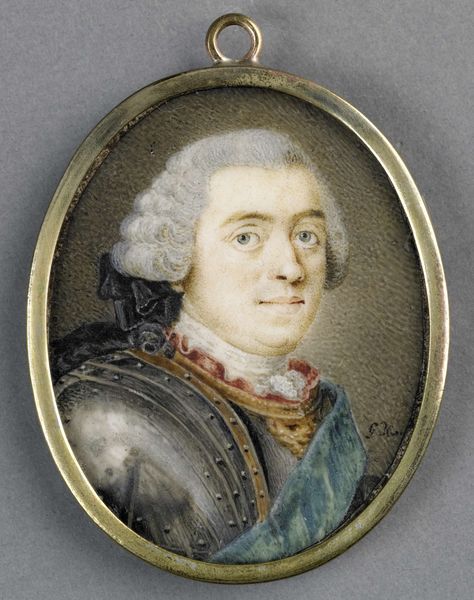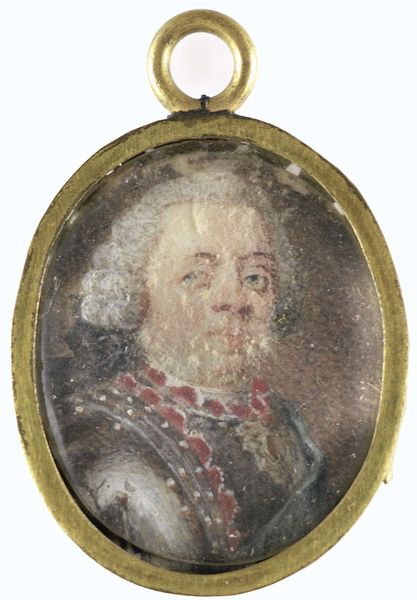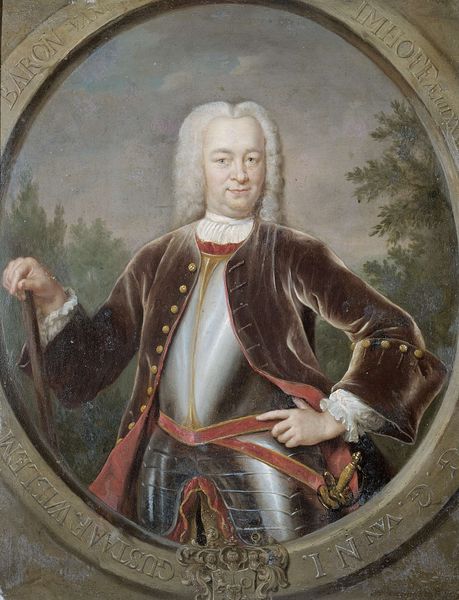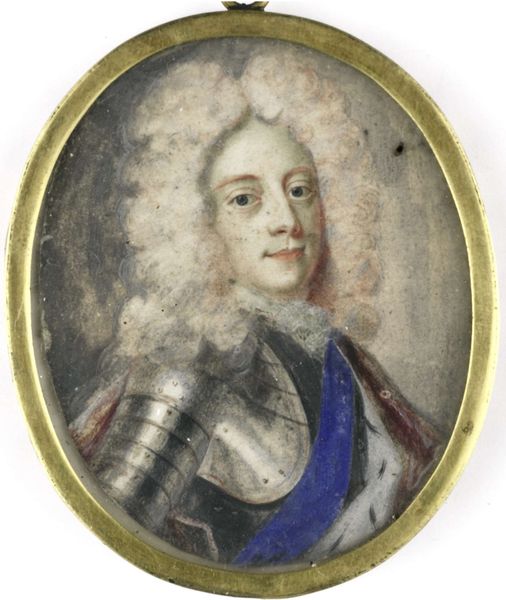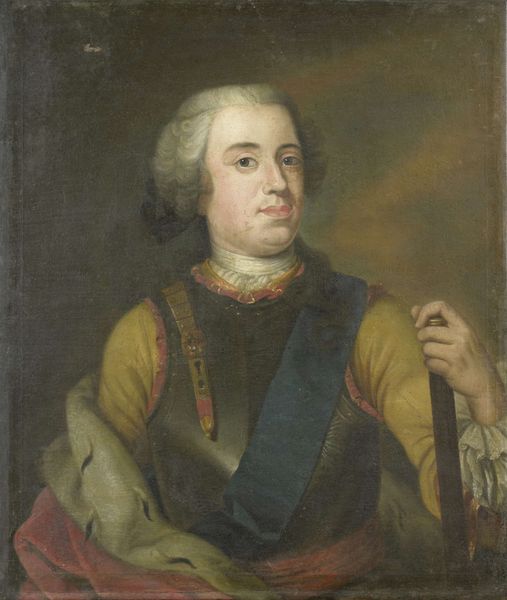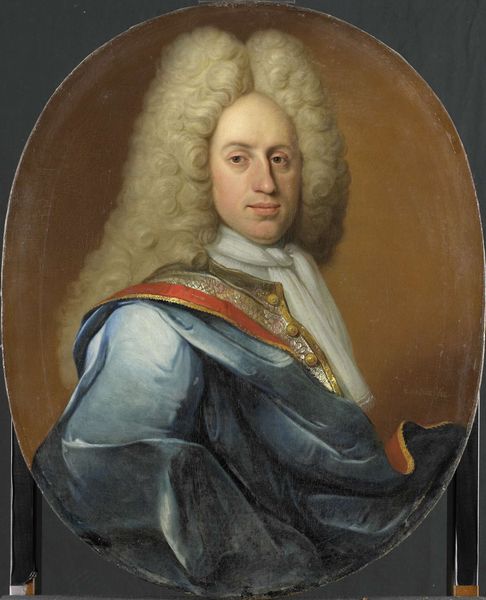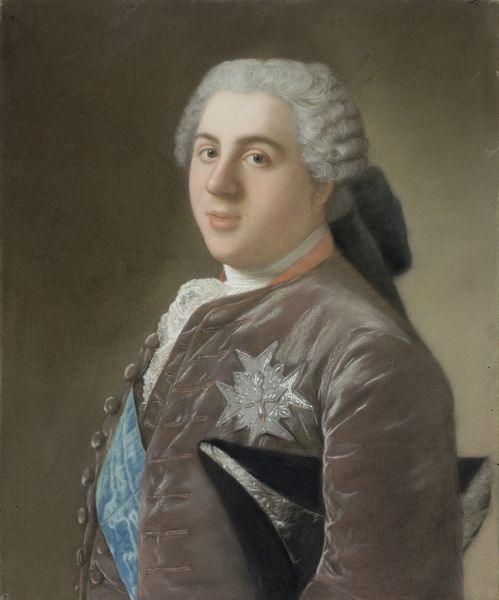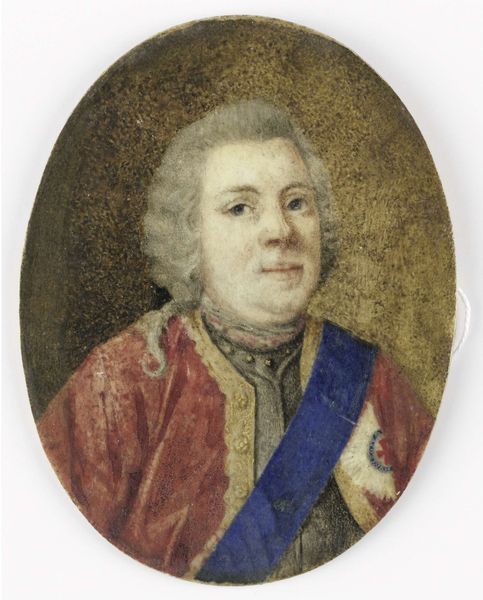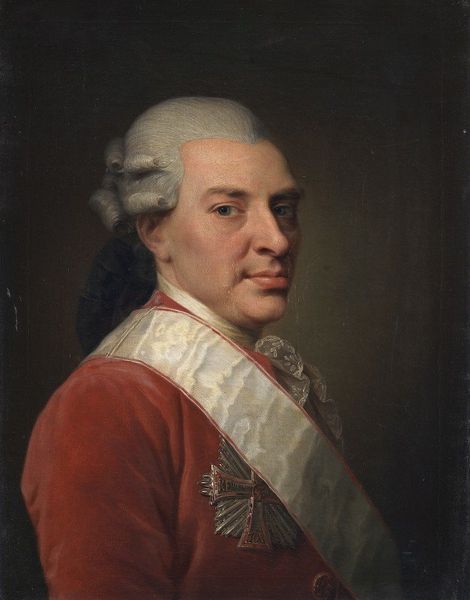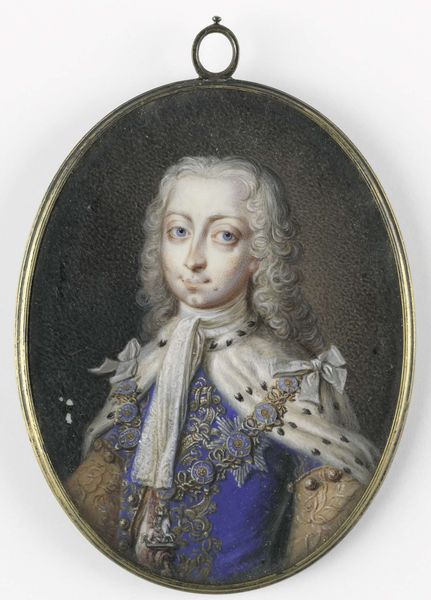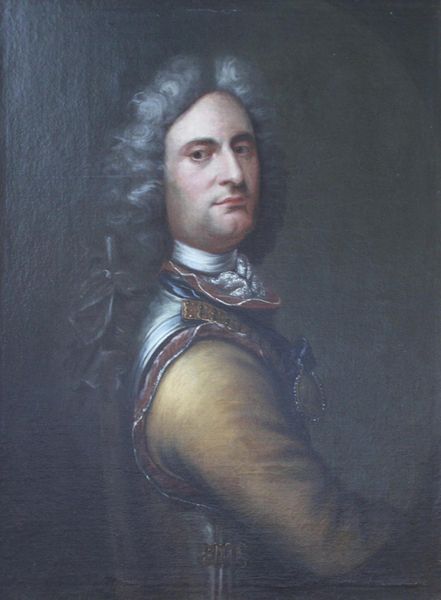
Portret van de Stadhouder Willem IV (1711-51), prins van Oranje Nassau 1755 - 1760
0:00
0:00
painting, enamel
#
portrait
#
painting
#
oil painting
#
enamel
#
miniature
#
rococo
Dimensions: height 5 cm, width 4 cm, height 5.7 cm, width 4.2 cm, depth 0.5 cm
Copyright: Rijks Museum: Open Domain
Editor: Here we have Jean-Étienne Liotard's miniature portrait of Stadtholder William IV, Prince of Orange-Nassau, made between 1755 and 1760. Its delicate brushwork, typical of Rococo art, draws you into a really intimate space. How do we situate a piece like this within its historical moment? Curator: Well, given its intimacy and its materials, enamel and oil, it's not designed for grand public display, is it? This wasn't intended to fill a vast hall in a palace, but to be held, maybe worn, by someone close to the Stadtholder. How does that influence how we should regard the purpose and symbolism of such a miniature? Editor: That's fascinating! So, unlike monumental portraits aimed at projecting power, this aims for personal connection? Curator: Precisely. It suggests the rising importance of the individual, a subtle shift away from purely dynastic representation. How might the miniature format affect the message of princely power compared to a full-size painting, especially during a period of political tension within the Dutch Republic? Think about how it can be possessed, carried, concealed even. Editor: I never considered its portability. This almost makes the Stadtholder feel…accessible, human, not just a symbol. Would this then humanize him through that availability? Curator: Exactly. The politics of imagery are deeply ingrained within these miniatures. Liotard wasn't merely depicting a ruler; he was crafting an image carefully designed to negotiate changing social and political currents. How then is this intimate object intertwined with public perception? Editor: I now see the significance extending beyond mere likeness, engaging with societal perception of leadership in this Rococo period. Curator: Absolutely, the piece demonstrates how power and identity were curated through art, then and even now.
Comments
No comments
Be the first to comment and join the conversation on the ultimate creative platform.

